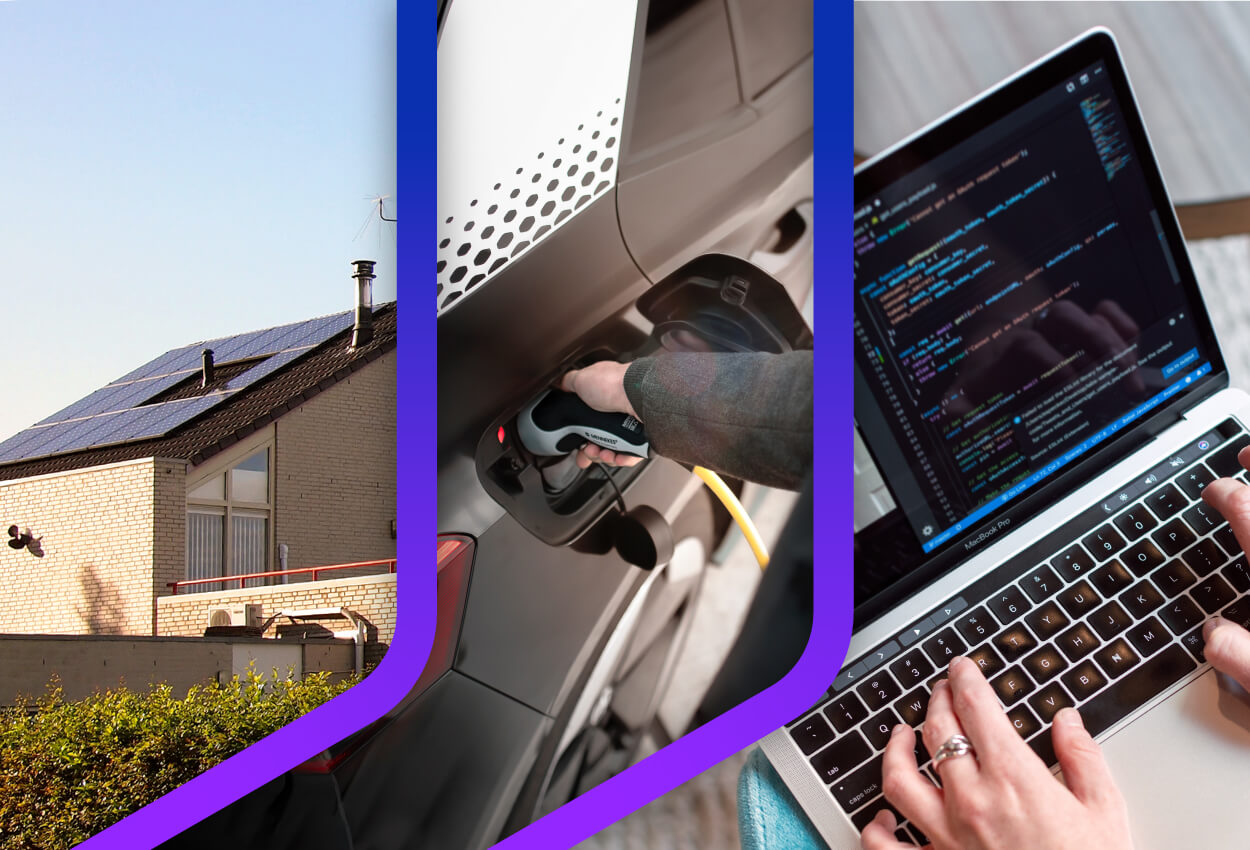Flux Federation | 12 September 2023


To preserve life on earth as we know it, global greenhouse gas emissions must be reduced by 45% before 2030, and reach net zero by 2050. Transitioning to net zero is one of the greatest challenges the world has ever faced and what’s required is nothing short of a complete transformation of how we produce, consume, and move about. Our ability to change how energy is generated and used will make or break this mission.
The energy sector is undergoing a monumental transformation driven by three interlinked forces:
Decentralisation: The transition away from centralised energy grids to distributed, democratised, and sustainable energy production systems.
Decarbonisation: The transition to a carbon-free world to mitigate the environmental impact of energy generation.
Digitalisation: The use of digital technologies to optimise energy production, infrastructure, and usage.
These three pillars are reshaping the energy sector, offering insight into a more sustainable, resilient, and consumer-focused future. And they exist in a mutual causality, or in other words, they’re all happening as a result of each other. The world needs to decarbonise, which means new renewable energy sources and storage options, greater optimisation of energy, and new regulations. The nature of these innovations has changed the scope and scale of energy production, storage, and distribution, which means the traditional centralised energy environment is becoming less relevant.
And at the heart of all this is one great enabler - technology. Which makes digitalisation the technological backbone enabling the energy sector. And as a result, there are transformative changes that enhance efficiency, sustainability, and competitiveness taking place.
Convergence of three D’s brings about a powerful synergy for the energy sector. Digitalisation facilitates creation of the digital energy economy where energy can be bought and sold from decentralised sources. Data can be analysed to optimise grid operations to better balance supply and demand. Real-time monitoring can ensure energy storage systems are controlled to ensure efficiencies are gained. Consumers can have greater control of their energy consumption, and production with smart in-home devices. And the list goes on.
While these advances in technology all support global decarbonisation efforts and are reshaping the way we produce, consume, and move about, it’s the slightly less compelling parts of the energy technology ecosystem that can actually be the biggest constraint. And that’s operational technology - the technology that enables energy companies to bring clean energy products to market. And yes, we’re talking about things like billing technology.
No doubt, consumers would struggle to understand if delays in their ability to utilise clean energy products was due to energy companies not having modern billing technology that can support the complexities of things like multi-party connections, or can’t expose let alone calculate the cost of energy from new energy sources. But indeed, for the energy sector this is a big challenge. It’s a bit like the battery in a car - a relatively small component of the overall picture, but without it, the car won’t start.
We have a mantra here at Flux that goes; you can’t sell what you can’t bill. And what we mean by this is simple - all the investment in energy generation and storage, and aggregation of generated energy so it can be efficiently supplied to market cannot achieve an adequate return if the resulting energy products cannot be accurately billed.
Legacy billing technology wasn’t necessarily built for the highly complex energy sector. And it certainly wasn’t designed with a data first approach. It was built with specific tariff constructs that may have provided the energy company with a necessary set of pricing and product options, but not the degree of flexibility and agility needed to survive in today’s rapidly evolving landscape.
So here’s the big question - do you have constraints that are impeding your transformation into a digital energy company? Can you really deliver a decarbonised, decentralised energy landscape with your current technology? Or are components of your overall tech stack standing in your way?
If transformation of the energy sector is being driven by decarbonisation, decentralisation, and digitalisation, then speed to market, diversity of products and services, and demonstrable return for participation are fast becoming the currency by which success is measured. To deliver the sustainable products and value customers are demanding, energy companies must navigate a number of barriers, not the least of which is the constraints of legacy software.
As a provider of an energy retail operations platform anchored by a world-class billing platform, we hear stories every day of energy companies hamstrung by outdated tech. And this is why Flux was created - to specifically enable energy companies to transform and evolve in an ever-changing environment.
Our billing engine exposes and calculates the cost of energy to enable energy retailers to bill almost any type of energy product - from traditional price books through to complex or micro-billed energy products. If you’re on the edge of innovation and need that last piece of the puzzle to complete your digital transformation, it might be time to speak to our team of energy tech experts about how we can support your journey.

Sign up for the latest updates in technology, changes, regulations, and new energy products from Flux.